Join More Than 50,000+ Subscribers and get latest camera news and rumors
NEW CAMERA VIDEOS ON YOUTUBE
|
By admin, on April 15th, 2025
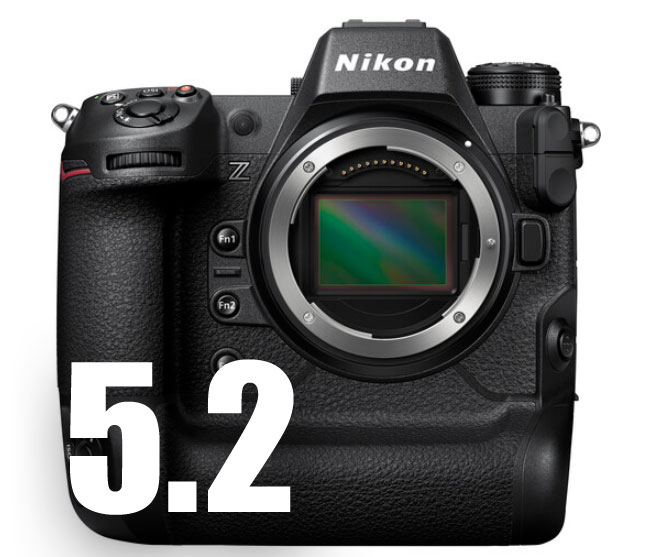
Nikon Z9 Firmware 5.2 Released in China and japan, and I hope and expect it will become available to other countries soon. Take a look at the details of the update
Translated version of the same
- • Now supports the “NX Field”* function, a remote photography system for businesses.
- * For an overview of NX Field and instructions on how to use NX Field, please visit the NPS website.
- NPS (Nikon Professional Services) website (English)
- *The smart device app “NX Field” is not available in some countries and regions.
- • The following bugs have been fixed:
- – In rare cases, when pressing the playback button after repeatedly shooting continuous shots, not all images would be displayed correctly.
- – In M mode, when taking continuous shots after changing the exposure, the exposure would occasionally be incorrect.
- – When a camera with the following settings is used as a linked release remote camera, the AF on the remote camera will be activated when the master camera’s shutter is pressed halfway.
- ▸ [Customization Menu] > a6 [Half-press AF lens activation] set to [Off]
[Custom Setting Menu]>a6 [Half-Press Shutter Drive AF]> [AF-ON Button Only]

What Is Nikon NX Field?
For those who don’t know about NX Field, the Nikon NX Field is a professional-grade remote shooting app from Nikon currently available for iOS apps for iPhones and iPads, first launched in June 2021, designed for agencies and pros to cover any event or game with multiple cameras flawlessly
- Control up to 10 cameras (one master, nine remotes) via wired LAN, wireless LAN, or 4G/5G networks.
- Adjust settings remotely, from autofocus to exposure, using the NX Field app on a smartphone or tablet (iPhone 8 or later, iPad Pro 2018+).
- Transfer images instantly to FTP servers for rapid publishing—crucial for newsrooms and sports agencies.
- Sync shutters for multi-angle shots, perfect for capturing that game-winning goal from every perspective.
Added support for enterprise users’ “NX Field” remote shooting system. Take a look at the features of the NX field software that you can do with your app
- Realizing shutter release, setting changes, and FTP image transmission of up to 10 remote cameras synchronized with a master camera via wired LAN cable.
- Wired LAN connection ensures reliable remote camera shutter release even in situations where many photographers are shooting with remote cameras via radio waves at once.
- Synchronization is also compatible with Wi-Fi connection using WT-5/6 Wireless Transmitters.
- The status of remote cameras, including connection status, latest shutter-release time, etc., can be confirmed from a master camera in order to avoid unintended errors.
- A smart device with the NX Field application installed can be used to change settings and check live view images of remote cameras, allowing for operation in narrow spaces or remote shooting from a distant location.
- Automatic FTP image transmission during synchronized shooting of a master and remote cameras as well as while changing camera settings via a smart device with the NX Field application.
- Easy recovery from FTP server network errors by remotely reconnecting to the server.
- Easy switching between shooting with a master camera only, with remote cameras only, or with both the master and remote cameras, which helps to avoid capturing unnecessary images and ensures that only the desired images are transferred.
- Autofocusing is possible with remote cameras from a master camera or smart device with the NX Field application.
- Remote shooting via the Internet, such as 4G/5G mobile network, is possible.
- The robotics of Mark Roberts Motion Control Limited can also be synchronized with a master camera.
- Silent remote shooting with compatible Z series cameras* for expanded shooting scenarios.
The content is updated on April 15, 2025
Follow us on our social pages FACEBOOK | TWITTER | INSTAGRAM to get live Camera News + Nikon Rumors 24X7
source Nikon Japan www.maging.nikon.com/imaging/lineup/software/nx_field/
By admin, on April 13th, 2025
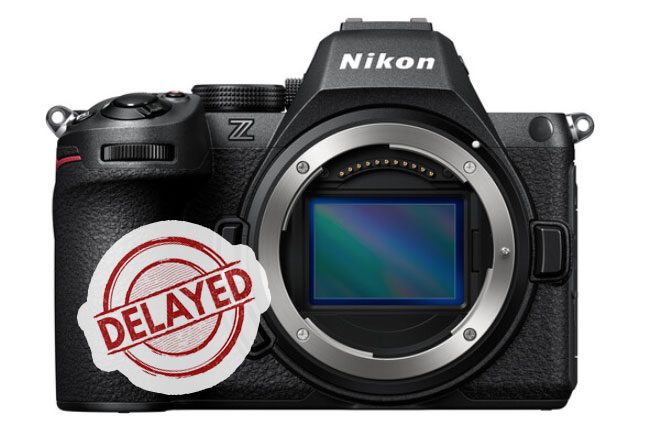
Nikon Z5 II is in very high demand. Japanese online stores that are taking pre-orders for the camera have already mentioned that they are getting an excessive number of pre-orders than they expected.
We are currently receiving many more orders for this product than we anticipated, so it may take some time for your order to be delivered. Thank you for your understanding.
In US the camera is expected to start shipping from April 24, 2025. Get the Nikon Z5 II camera from B&H Store | Adorama.com | Amazon.com
We have already done several comparison reviews of the Nikon Z5 II camera, you can check them out here.
Nikon Z5 II vs Nikon Zf
Nikon Z5 II vs Canon R8
Nikon Z5 II vs Nikon Z6 II
As I write this article, Nikon has not received any official statement regarding the shortage of supply of the Nikon Z5 II camera, but I think they will once they face the huge demand after April 24. Retailers will deliver on a first-come, first-served basis.
Follow us on our social pages FACEBOOK | TWITTER | INSTAGRAM to get live Camera News + Nikon Rumors 24X7
source nij.nikon.com
By admin, on April 11th, 2025
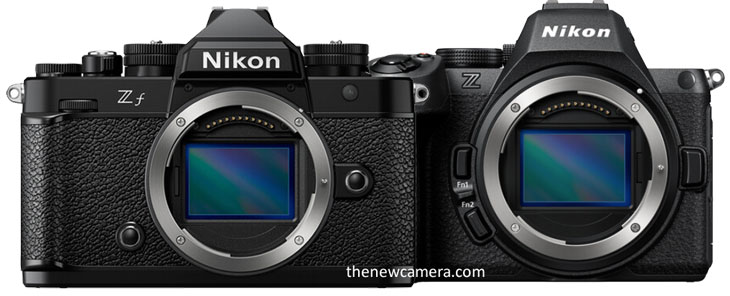
Nikon Z5 II vs Nikon Zf – Let’s compare the two and find out the major difference between the photography and the videography parts.
Photography Analysis
Nikon Zf camera features extensive manual control
First, let’s talk about the design of both cameras. Nikon Zf is built like a tank and features extensive manual control over the body with a retro look, so if you are someone who loves to have a retro-looking camera for photography purposes, without having a second thought in your brain, you should pick this camera.
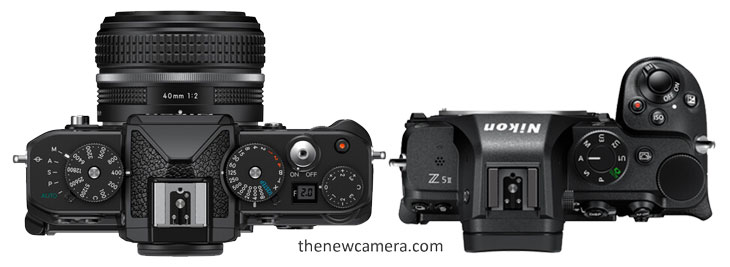
You have to buy an additional hand grip for Zf
In terms of overall design, the Nikon Z5 II camera has a deep hand grip, which is comfortable to hold for a longer period. However, due to its classic retro design, Zf does not have a deep or handy grip, so we have to buy it from SmallRig or a new addition, and you have to purchase it when you buy the Zf camera. In the Nikon Zf camera, we have a microSD card option and a UHS-II SD memory card slot, so you do have a dual card slot option—one is microSD. These cameras have similar 3.69 million-dot electronic viewfinders, but the Nikon Z5 II specifically mentions its brightness, which is 3000 nits—good for daylight shooting. The rest of the core specifications, which include the ports and the battery life, are approximately the same.
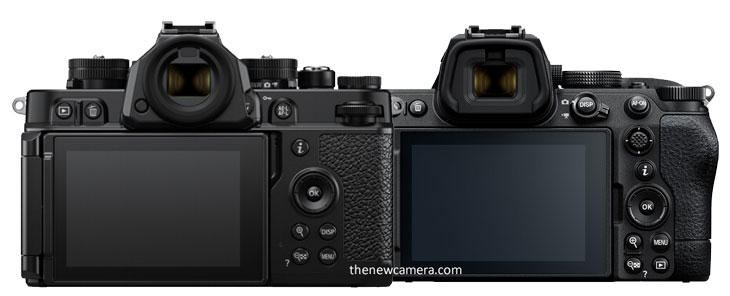
The Nikon Zf camera doesn’t have the joystick controller as we have in the Nikon Z5 II camera, it helps to navigate easily.
Internal core specifications of both the cameras.
Internally, both of the cameras are almost the same, so let’s start with the sensor.
Image sensor and image processor (same in both): Both cameras use a 24-megapixel BSI full-frame CMOS sensor. The Z5 II camera is paired up with the EXPEED 7 image processor. So technically, we will not find any big difference in the image quality performance of both the cameras. Both will provide us with similar types of images.
Image stabilization (same in both): Both of them feature a similar type of sensor-shift image stabilization unit inside them, and even the image processor that handles the firmware and the operation of the IBIS unit is the same. So the differences we see in the table—that one has 7.5 stops and the other has 8—may be due to some of the parameters that CIPA regularly changes while testing out the cameras. Although the IBIS unit inside both of these bodies is the same. And in both the cameras, we have an IS mechanism that you can link with lens VR (IBIS).
Continuous shooting speed (same in both): The Zf and Nikon Z5 II both can shoot at up to 11fps in RAW (in Continuous High Extended mode), and up to 15 or 14fps with the help of mechanical shutter, depending on the use of electronic or mechanical shutter for JPEG mode. There’s also a JPEG-only ‘C15’ and ‘C30’ mode that uses a video stream to shoot 30fps images. We also get a pre-burst option like that on the Z8 and Z9, in both the Nikon Z5 II and Nikon Zf.
Here’s a comparison table based on the information you provided for the Nikon Z5 II vs Nikon Zf:
| Feature |
Nikon Z5 II |
Nikon Zf |
| Design |
Modern DSLR-style with Standard controls |
Retro-style, Extensive manual controls |
| Build Quality |
Solid, ergonomic |
Built like a tank with vintage aesthetics |
| Handgrip Style |
Deep hand grip |
Lacks deep grip (requires external grip) |
| Memory Card Slots |
Dual card slots: 2x UHS-II SD |
Dual card slots: 1x UHS-II SD, 1x microSD |
| Electronic Viewfinder |
3.69 M-dot EVF, 3000 nits brightness |
3.69M-dot EVF |
| Sensor Type |
24MP BSI full-frame CMOS |
24MP BSI full-frame CMOS |
| Image Processor |
EXPEED 7 |
EXPEED 7 |
| Image Quality |
Similar performance |
Similar performance |
| Image Stabilization (IBIS) |
Yes (same unit as Zf) |
Yes (same unit as Z5 II), rated slightly higher (may vary due to CIPA testing) |
| Pixel Shift Mode |
Yes, 96 MP |
Yes, 96 Mp |
| IS + VR Sync |
Yes |
Yes |
| Continuous Shooting (RAW) |
Up to 11 fps (Continuous High Extended) |
Up to 11 fps (Continuous High Extended) |
| Pre-Shooting Buffer |
Yes |
No |
| JPEG Burst Modes |
C15 / C30 (up to 30fps JPEG via video stream) |
C15 / C30 (up to 30fps JPEG via video stream) |
| Pre-Burst Option |
Yes (like Z8/Z9) |
Yes (like Z8/Z9) |
| Battery Life & Ports |
Approx. same as Zf |
Approx. same as Z5 II |
Both cameras are capable of recording 4K videos at 60 fps with DX crop, and 4K 30 FPS oversampled video, as well as full HD videos up to 120 frames per second. All these frame rates are the same.
In a recent update to the firmware, the Nikon ZF received Clear Zoom as well as the latest Bird Eye Autofocus update.
Both of the cameras, the Nikon Z5 II and the Nikon ZF, record 4:2:2 10-bit videos internally in their SD card. Both of them share the 10-bit H.265, SDR, and N-Log modes as well as Red LUT LED support.
Now, where does the difference exist?
- The difference is that the Nikon Z5 II can record N-RAW videos internally in its SD card, whereas the Nikon ZF is limited to recording N-Log, unprocessed video, still not available in the ZF camera.
- Product Showcase mode: This exclusive feature is currently only limited to the Nikon Z5 II camera. We hope and expect that in upcoming firmware updates, Nikon ZF will get that, too.
| Feature |
Nikon Zf |
Nikon Z5 II |
| Max Video Resolution |
4K 60p (1.5x crop) |
4K 60p (1.5x crop) |
| Uncropped 4K |
Up to 30p |
Up to 30p |
| Full-HD Slow Motion |
Up to 120p |
Up to 120p |
| N-Log |
Yes, 10-bit |
Yes, 10-bit |
10-bit H.265 in SDR/HLG/N-log tone modes (both cameras)
|
| Waveform Monitor |
Yes |
Yes |
| RED LUTs Compatibility |
Yes |
Yes |
| N-Raw Recording |
Yes (12 Bit), internally |
No |
IBIS
|
Yes |
Yes |
| Electronic VR |
Yes |
Yes |
| Product Review Mode |
Yes |
No |
| High-Res Zoom |
Yes (2X) |
Yes (2X) |
The Conclusion
When we talk about photography performance, then both the camera Nikon Z5 II and Nikon ZF deliver almost the same performance the fact both of them feature the same sensor and image processor, and even the same sensor. Now, for photographers who love retro design, retro aesthetic, and extensive manual control over their body, they should prefer the Nikon ZF camera, but do remember that because the hand grip is minimal, you have to buy an additional hand grip for extended shoots. On the other side, we have the Nikon Z5 II, which features a very good DSLR-style modern design and deep hand grip — a perfect camera for weddings or even shooting.
Now, when we talk about videography, the Nikon Z5 II takes a slight lead, or you can say advantage, due to the availability of N-RAW recording which is not present inside the Nikon ZF camera. It will give professionals and videographers a bit more flexibility in colour grading and post-production. The other advantage that we have for content creators is the product showcase mode in Z52, so it’s an ideal camera for YouTube and content creators by enabling product showcase mode.
Nikon Zf vs Nikon Z5 II – Price Check – Latest Deals
Nikon Zf body price – B&H Store – Amazon.com
Get the Nikon Z5 II camera from B&H Store | Adorama.com | Amazon.com
Support us – Use or affiliate link Amazon.com | B&H Store | Adorama.com for the next purchase u make – it helps us 🙂
Follow us on our social pages FACEBOOK | TWITTER | INSTAGRAM to get live Camera News + Nikon Rumors 24X7
By admin, on April 10th, 2025
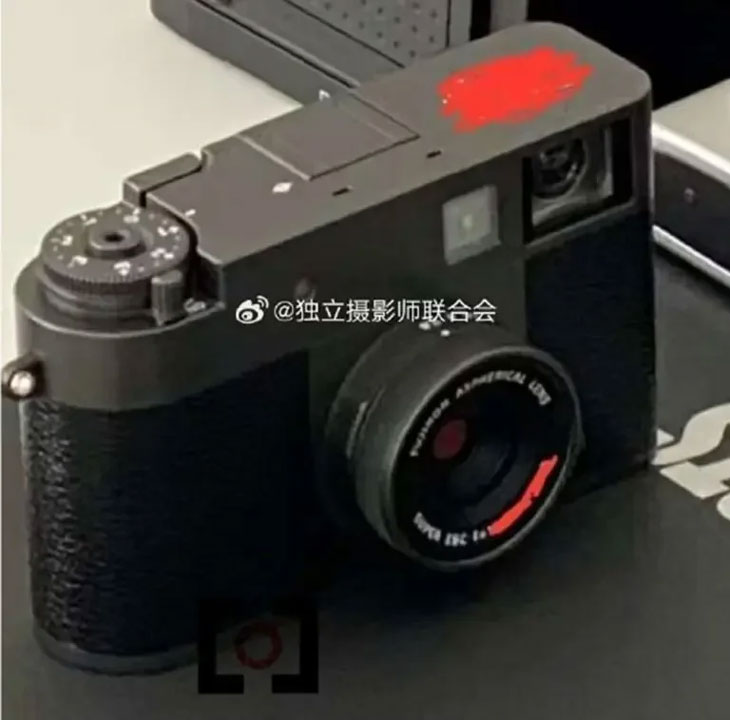
Fuji is about to announce a new half-frame fusion camera; the leaked image is trending on Webio. This is an exciting time since Fuji is always trying to create a new consumer base with its new offerings. The image is very unique and interesting, the design of the camera resembles the PENTAX 17 or Leica M.
This is the first time the leaked image of the upcoming camera surfaced on the web, as in the image we can see the lens is a fixed Fujinon lens, EBC coating, large aperture of F2.4. The focal length parameters are not known and the photo has been pixelated by the source. Take a look at what the source said
According to sources, testing has begun with some cameramen. If this leak is true, this look will certainly appeal to certain market segments, so we look forward to more definitive news.
It’s an interesting design to have the shutter button in the center of the exposure dial. It’s compact, but it seems to have some sort of optical viewfinder.
Fuji Half-Frame Camera Specification
- Half Frame camera
- Dimensions: 105.8mm x 64.3mm
- as a reference, Fujifilm X-M5 is 111.9 x 66.6
- f/2.4 aperture
- 1″ sensor
- Vertical LCD – see here
- The concept of how it will operate
- Made in China
We will update this regarding the authenticity of this information as well as the image.
Follow us on our social pages FACEBOOK | TWITTER | INSTAGRAM, –> See More Fuji Rumors
also see – Fuji Upcoming Cameras 2025 – 2026
Via – asobinet.com
By admin, on April 9th, 2025
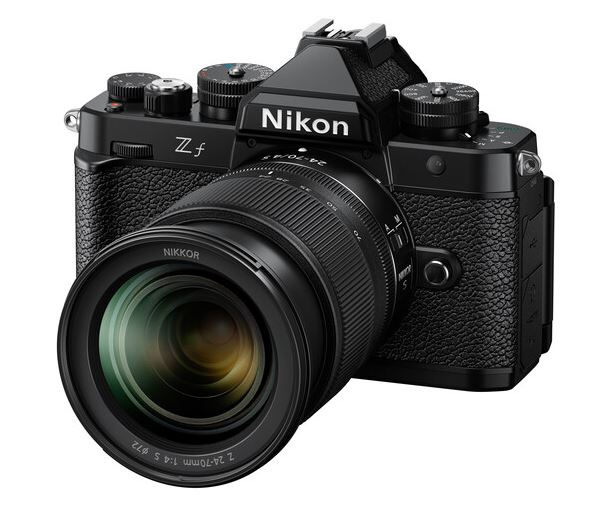
Nikon finally announced a major firmware update for the Nikon Zf camera to upscale its overall performance. The New 2.0 firmware adds a dedicated bird mode to the camera’s subject recognition autofocus, support for connecting to the company’s Imaging Cloud service, and other improvements that will make shooting video and using older, manual-focus lenses more convenient. According to Nikon, the new BIRD EYE AF mode will help users track birds more effectively. So, if you’re a Birdographer, stop putting your camera in AUTO animal mode now and use a dedicated bird-eye AF mode.
Now we are waiting for the Nikon Z6 III update related to bird eye AF.
Download from here https://downloadcenter.nikonimglib.com/en/download/fw/545.html
Support us – Use or affiliate link Amazon.com | B&H Store | Adorama.com for the next purchase u make – it helps us 🙂
Follow us on our social pages FACEBOOK | TWITTER | INSTAGRAM to get live Camera News + Nikon Rumors 24X7
By admin, on April 6th, 2025
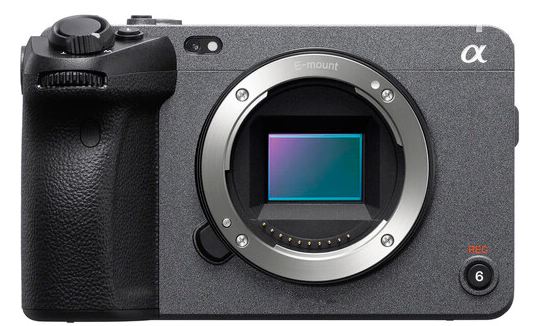
Finally, we have the Sony FX30 camera at its lowest price—only $1,498. So, if you are interested in content creation, weddings, and photography, or if you love having a perfect cinema camera in your hand, then this is without a doubt the best time to have the FX30 camera.
Check out the latest / Lowest price of Sony FX30 at B&H Store | Amazon.com
By admin, on April 4th, 2025
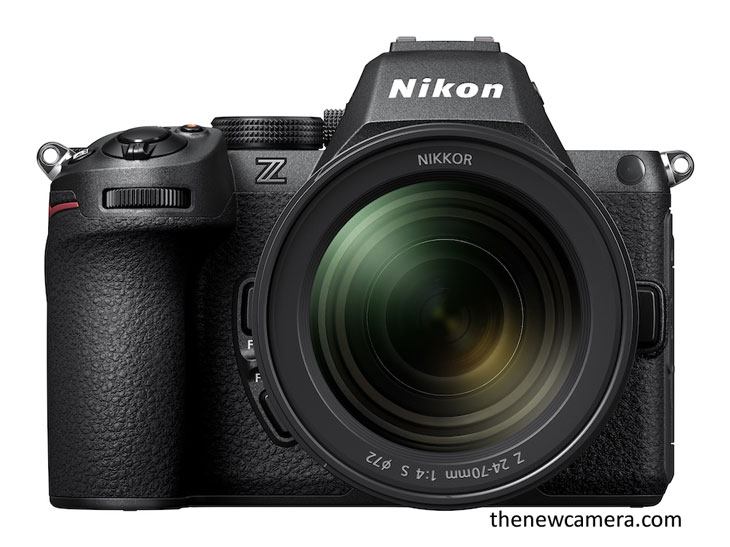
Let’s compare the Nikon Z5 II versus the Nikon Z6 II camera now. Z5 II camera was announced recently on April 2025 and features all the possible latest updates straight out from Nikon professional camera that include AI AF, that helps 9 different types of subject detection 🔎 automatically and it also has a dedicated bird eye auto focus mode that even cameras like the Nikon Z6 Mark III are waiting for an update, at the time I am writing this article on April 4, 2025.
Similarly, not only are the updates limited to AI auto focus, we also have 7.5 stops of image stabilizer that can be linked to the Nikon AF points to ensure the best stability possible in this segment.
The list goes on, so let’s compare side-by-side the advantages of the new Z5 Mark II camera compared to the Z6 Mark II.
| Feature |
Nikon Z5 II |
Nikon Z6 II |
| Image Processor |
EXPEED 7 |
EXPEED 6 |
| 9 AI Subject Detection |
Yes |
No |
| Bird Eye AF |
Yes |
No |
| Human & Animal Eye AF |
Yes |
Yes |
| AF sensitivity |
– 19 Ev |
– 5 Ev |
Design and build comparisons of both the cameras
Both cameras feature a magnesium alloy body, and both of them are weather sealed, so you don’t have to worry about using them outdoors in a kind of windy or rainy situation if you are using weather-sealed lenses. Other than that, the weight and the size are approximately the same. The biggest noticeable difference when you pick both of them in your hand is the kind of display screen the cameras are using. Z5 II is using a fully articulating touch display screen that helps you to create content on the go, whereas the Z6 Mark II camera features a tilting display screen, which limits its use to photographers only.
The other noticeable difference is a bright 3.69 million dot electronic viewfinder with 3000 nits of brightness.
Build & Display Feature Comparison
| Feature |
Nikon Z5 II |
Nikon Z6 II |
| Body Material |
Magnesium Alloy |
Magnesium Alloy |
| Weather Sealed |
Yes |
Yes |
| Display Screen |
Fully Articulating Touchscreen |
Tilting Touchscreen |
| EVF |
3.69 M-dot, 3000 nits |
3.69 M-dot (no brightness spec) |
| Top LCD Display |
No |
Yes |
| Ideal For |
Hybrid creators (photo + video) |
Photographers |
But apart from the almost identical controls and ports, both of them have dual card slots. In the camera, the additional advantage we get in the Z6 Mark II is the top display screen, and in the Z5 II, we don’t have that, so that makes the design difference complete.
Overall, both cameras are highly usable for photographers, but if you are a hybrid shooter, the Nikon Z5 Mark II camera is more usable design-wise due to its fully articulating display screen.
Photography features comparison
Nikon Z5 II and Nikon Z6 Mark II feature a bit different sensor readout speed, since the Nikon Z5 Mark II camera uses the sensor from Nikon Zf whose readout speed is faster than the Nikon Z6 II camera, resulting in better images while keeping away rolling shutter effect as much as possible.
Also, the continuous shooting speed of the new Nikon Z5 II with the help of the latest EXPEED 7 image processor goes up to 14 frames per second in JPG and RAW it’s up to 11 frames per second, and with upcoming updates, the mechanical shutter will support RAW up to 14 FPS. And if you use the electronic shutter of the Nikon Z5 II camera, you will get the continuous shooting speed of 30 frames per second, which is insane when compared to the Nikon Z6 II. In the Nikon Z6 II camera, the continuous shooting speed reaches 14 frames per second in 12-bit RAW, so it is also quite usable.
Burst Shooting & Sensor Speed Comparison
| Feature |
Nikon Z5 II |
Nikon Z6 II |
| Mechanical Shutter Speed |
14 FPS with 14 Bit RAW |
14 FPS (12-bit RAW) |
| Electronic Shutter Burst |
Up to 30 FPS |
Not available |
| Sensor Readout Speed |
Faster (from Nikon Zf) 24ms |
Slower 50.8 ms |
More than these two differences, the biggest difference is due to the presence of EXPEED 7 image processor, we are getting AI autofocus inside the new Nikon Z5 II camera, and with the help of that the camera can detect 9 different types of moving subjects automatically which also includes bird eye autofocus mode, specifically for wildlife photography.
Nikon Z6 Mark II camera does detect human and animal eyes but the autofocus algorithm isn’t updated that much to support AI autofocus just like we have in Nikon Z5 II.
So for photographers it’s not only important to push or uplift the continuous shooting speed to a new benchmark, but at the very same time, it’s also very important to perfectly do subject tracking.
Now let’s talk about the sensor shift image stabilization system. The Nikon Z6 Mark II camera provides up to five stops of shutter speed compensation, whereas the new Z5 Mark II camera features 7.5 stops of shutter speed compensation with the help of new IBIS tech. Not only limited to that—with the new EXPEED 7 image processor—now you can link your VR with camera autofocusing points so you get perfect stability and true 7.5 stops of IBIS from your camera.
| Feature |
Nikon Z5 II |
Nikon Z6 II |
| IBIS (In-Body Stabilization) |
7.5 Stops |
5 Stops |
| VR Linked with AF Points |
Yes |
No |
| Pixel Shift Mode |
Yes |
No |
The expandable ISO range of both the cameras is the same—up to 204800.
ISO Range Comparison
| Feature |
Nikon Z5 II |
Nikon Z6 II |
| Native |
64,000 |
51,200 |
| ISO Range (Expanded) |
Up to 204800 |
Up to 204800 |
| Low Light Performance |
Improved with AI AF |
Good with standard AF |
The low light AF sensitivity of the Nikon Z5 Mark 2 camera is up to -19.0 EV, the camera can do pinpoint AF in nearly dark situations, whereas the Nikon Z6 II camera is limited to -5 EV.
The pixel shift mode is also now available in the Nikon Z5 II camera. With the help of this mode, you can generate 96 megapixel of high-resolution images, but you have to keep your camera still on a tripod and the images will be processed by the Nikon NX software.
Verdict / Conclusion: Best still photography camera – Nikon Z5 II
Nikon Z5 II with its vari-angle display screen and 3000 nits of brightness EVF, not only from the design part but also from its core specification where we find ZF sensor which is quite bit faster while having the readout speed of 23ms, at the very same time the camera uses brand new EXPEED 7 image processor which implements AI autofocus algorithm directly coming from Nikon Z8 and Z9, moreover this the autofocus sensitivity has been upscaled to a next level where you can detect subjects up to -19 EV which was limited to -5 EV in Nikon Z6 II and the cherry on top thing is now the sensor-shift image stabilization is up to 7.5 stops and you can also link your IBIS with camera autofocus point which is completely a brand new thing and gives super stable shot.
Nikon Z5 II has been upscaled from upside down and every single core spec has been updated and now it’s even far better than Nikon Z6 Mark 2 camera so don’t do a mistake by buying the Z6 II get Nikon Z5 II it’s far more better than the Z6 II in terms of still photography.
| Feature |
Nikon Z5 II |
Nikon Z6 II |
| Autofocus Sensitivity |
AF works in -19.0 EV low light (better for dark scenes) |
Limited to -5.0 EV AF sensitivity |
| Pixel Shift Mode |
Available (generates 96MP high-res images via software) |
Not available |
| Image Stabilization (IBIS) |
Up to 7.5 stops with AF-point linked IBIS |
Up to 5 stops, no AF-point linked IBIS |
| Image Processor |
EXPEED 7 (new, faster, supports AI algorithms from Z8/Z9) |
Dual EXPEED 6 |
| Display & EVF |
Brighter EVF with 3000 nits, possibly better display |
Standard brightness |
| Sensor Readout Speed |
23ms readout, helps reduce rolling shutter |
50 ms |
| Design & Build |
Fully refined design with improved internals |
Older design |
| Subject Detection AF |
Inherited from Z8/Z9 (advanced AI tracking) |
More basic subject tracking |
| Price-to-Performance |
More value-oriented with high-end features |
Slightly older tech for the same/lower price |
Video Core Specification
Let’s compare the video specifications of both cameras. The Nikon Z5 Mark II camera can record 4:2:2 10-bit videos, 12-bit videos, and RAW videos. Both of these are significant advantages that allow you can internally record high-quality RAW videos in the camera.
So the Nikon Z5 Mark II camera gives you the next level of colour grading experience. The audio recording also includes linear PCM at 48 kilohertz, 24-bit for any MOV formats. Also, you get 16-bit for MP4, enhancing the overall audio quality for video production.
While researching, I have found that Nikon Z6 Mark II camera also supports linear PCM and AAC, but it does not specify specifically the bit depth beyond the standard 16-bit for AAC and its internal video recording is limited to 8-bit, so in that you are not getting the quality which the recently announced Nikon Z5 II offers.
The Nikon Z5 II camera offers RAW video capability internally inside the camera. You can record N-RAW videos up to 4K 30 FPS and even 4K 60 FPS in DX mode.
Nikon Z6 Mark II camera gives you limited 8-bit recording capability, and if you want to take out RAW videos, you have to use external recorders and switch it to the HDMI port, so that’s a very messy process, and even then, you are not getting the high quality.
Comparison Table:
| Specification |
Nikon Z5 II |
Nikon Z6 II |
| Max Video Resolution |
4K UHD at 60p (APS-C crop), 4K at 30p full width |
4K UHD at 60p (DX crop), 4K at 30p full width |
| 1080p Frame Rates |
Up to 120p |
Up to 120p |
| Slow-Motion |
1080p at 30p x4, 25p x4, 24p x5 |
1080p at 30p x4, 25p x4, 24p x5 |
| File Formats |
NEV, MOV, MP4 |
MOV, MP4 |
| Video Compression |
N-RAW (12 bit), H.265/HEVC (8/10 bit), H.264 (8 bit) |
H.264 (8 bit) |
| Internal Bit Depth |
Up to 10-bit (H.265), 12-bit (N-RAW) |
8-bit |
| External Recording |
Supports 10-bit N-Log, etc. |
10-bit N-Log, HDR (HLG), RAW via HDMI |
| Audio Recording |
Linear PCM 24 bit (NEV/MOV), AAC 16 bit (MP4) |
Linear PCM, AAC (16 bit) |
| ISO Sensitivity |
100-51200, up to 204800 equivalent |
100-51200, up to 204800 equivalent |
RED Luts
|
Yes |
No |
| Waveform |
Yes |
No |
| Lossless Clear Zoom (2X) |
Yes |
No |
| RAW Video |
Internal N-RAW up to 4K 30p |
External RAW via HDMI |
| Additional Features |
Time-lapse, electronic VR, time codes, N-Log, HDR (HLG), wave-form display, etc. |
Time-lapse, electronic VR, time codes, N-Log, HDR (HLG) |
I have found that the recently announced Nikon Z5 II camera offers RED LUTs made for upscaling your overall cinematography experience to the next level. At the very same time, those LUTs are very helpful even in wedding cinematography.
Additionally, your overall cinematography experience becomes more and more enjoyable when you get the support of Nikon’s latest AI autofocus technology as well as 7.5 stops of sensor stabilization to ensure stable and smooth shots.
Overall conclusion: The best video camera is the Nikon Z5 II.
The best camera, when we compare the core specifications of both, without a doubt, is the Nikon Z5 II camera, so we highly recommend you to get the Nikon Z5 Mark II camera over the Z6 II.
Nikon Z5 II vs Nikon Z6 II | Nikon Z5 II vs Canon R8 | Nikon Z5 II vs Nikon Zf | Nikon Z5 II vs Sony A7 III
Get the Nikon Z5 II camera from B&H Store | Adorama.com | Amazon.com
|
KEEP THIS BLOG ALIVE - Support New Camera Buy Canon Lenses, Buy Music CD or Digital Camera at amazon it helps this site, and you do not pay anything extra, it is just a way to help support this site.

|















